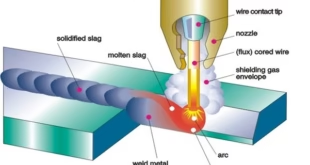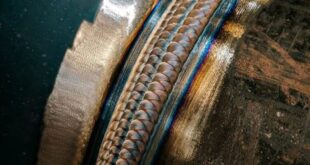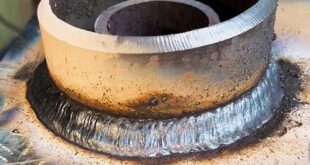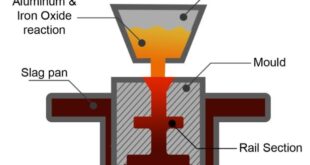Plasma Welding: Its Principles, Applications
Plasma welding is a highly advanced and precise method of welding that is used in a variety of industries for a wide range of applications. This article will provide an overview of plasma welding, including the principles of how it works, the types of plasma welding processes and their applications, the equipment and setup required, the advantages and disadvantages compared to other welding methods, and the various industries in which it is used. We will also discuss quality control and testing in plasma welding, safety considerations, best practices, and troubleshooting common issues. Finally, we will explore the future of plasma welding and emerging technologies that have the potential to shape the way this welding method is used.
Plasma Welding
Plasma welding is a specialized welding process that uses a plasma arc to melt and fuse metal parts together. The plasma arc is created by ionizing a gas, such as argon or helium, and then passing an electric current through it. The plasma arc generates extremely high temperatures, which melt the metal and create a pool of molten metal that cools and hardens to form the weld. Plasma welding is a highly precise and efficient process that can be used to weld a variety of metals, including ferrous and non-ferrous metals. It is commonly used in the aerospace, automotive, and manufacturing industries, as well as for repair and maintenance work. One of the key advantages of plasma welding is its ability to produce high-quality welds with minimal spatter and distortion. It is also a fast process that can be used to weld thin or thick metal sheets.

Plasma welding principles
Plasma welding is a process that uses a plasma torch to heat and melt materials together, creating a strong, durable weld. This method of welding has many advantages over traditional welding techniques, including higher precision and faster welding speeds. In this article, we will explore the principles of plasma welding and how it works. Plasma welding is similar to other welding methods in that it involves the use of heat to join two or more materials together. However, plasma welding differs in that it uses a plasma torch to generate a highly ionized gas, or plasma, to transfer heat to the materials being welded. The plasma torch uses an electric arc to ionize a gas, such as argon or helium, creating a plasma jet that can reach temperatures of up to 30,000 degrees Celsius.
Types of plasma welding processes
There are several types of plasma welding processes that are used in different applications. Some of the most common plasma welding processes include:
- Plasma Arc Welding (PAW): This is a common plasma welding process that utilizes a plasma torch to generate an electric arc that ionizes a gas, creating a plasma jet. The plasma jet is used to transfer heat to the materials being welded, melting and joining them together.
- Plasma Transferred Arc Welding (PTAW): This process is similar to PAW, but it uses a consumable electrode to transfer the electric arc to the plasma jet. This allows for more precise control over the welding process and can be used to weld materials that are difficult to work with using other methods.
- Plasma Tungsten Arc Welding (PTAW): This process uses a non-consumable tungsten electrode to generate the plasma jet, which is then used to transfer heat to the materials being welded. PTAW is often used for welding materials that are prone to contamination, as the tungsten electrode is not consumed during the welding process.
- Submerged Arc Plasma Welding (SAPW): This process involves submerging the welding arc and the materials being welded in a layer of shielding gas. This can improve the quality of the weld and is often used for welding thick materials.
- Plasma Beam Welding (PBW): This process utilizes a high-energy plasma beam to melt and join materials together. PBW is a highly precise method that is often used for welding thin materials and components with complex shapes.
- Plasma MIG Welding (PMIG): This process combines the principles of plasma welding with the wire feed technology used in MIG welding. PMIG is a fast and efficient process that is often used for welding large components and structures.
Equipment and setup for plasma welding
Plasma welding requires specific equipment and a proper setup to ensure a successful and safe welding process. Here are some of the key components and considerations for setting up a plasma welding station:
- Plasma torch: The plasma torch is the main component of the plasma welding setup, as it generates the plasma jet that is used to transfer heat to the materials being welded. There are different types of plasma torches available, and the appropriate one will depend on the specific requirements of the welding project.
- Welding power source: The plasma welding process requires a power source to generate the electric arc that is used to ionize the gas and create the plasma jet. There are several types of power sources available, including AC/DC inverters and high-frequency generators.
- Welding cables: The welding cables are used to connect the power source to the plasma torch, and they must be of the appropriate size and length to ensure a safe and efficient welding process.
- Gas cylinder and flow meter: The plasma torch requires a gas, such as argon or helium, to create the plasma jet. The gas cylinder stores the gas, and the flow meter is used to control the flow of gas to the plasma torch.
- Welding table and fixtures: The welding table should be sturdy and stable, and it should be large enough to accommodate the materials being welded. Fixtures and clamps can be used to hold the materials in place during the welding process.
- Protective gear: Plasma welding generates high temperatures and intense light, and it is important to wear appropriate protective gear, such as a welding helmet, gloves, and protective clothing.
Advantages and disadvantages
Advantages compared to other welding methods
- High precision: Plasma welding is known for its ability to produce high-quality welds with minimal distortion. The focused nature of the plasma jet allows for precise control over the welding process, making it a good choice for applications that require precision.
- Fast welding speeds: Plasma welding can be performed at much faster speeds than other welding methods, making it an efficient choice for many manufacturing applications.
- Ability to weld thin materials: Plasma welding is particularly well-suited for welding thin materials, as the focused plasma jet can easily reach and melt the material without causing excess heat that could distort the material.
- Wide range of materials: Plasma welding can be used to weld a wide range of materials, including metals, alloys, and composites.
- Minimal spatter: Plasma welding generates minimal spatter, or excess molten material, compared to other welding methods. This makes it a good choice for applications where a clean weld is required.
- Improved productivity: The combination of high precision, fast welding speeds, and the ability to weld thin materials make plasma welding a productive choice for many industrial applications.
Disadvantages compared to other welding methods
- High equipment cost: Plasma welding equipment can be expensive, and it requires specialized training to operate. This can make it a more costly option compared to other welding methods.
- Limited thickness range: Plasma welding is best suited for welding thin materials, and it is not as effective for welding thick materials. For this reason, it may not be the best choice for projects that involve welding thick materials.
- Limited penetration: Plasma welding typically produces shallow welds with limited penetration, which may not be suitable for certain applications.
- Specialized gas requirements: Plasma welding requires specialized gases, such as argon or helium, which can add to the overall cost of the welding process.
- High heat input: The plasma jet used in plasma welding generates high temperatures, which can cause excess heat input and distort the material being welded. This can be mitigated through proper heat management techniques, but it is something to consider when choosing a welding method.
Applications of plasma welding in various industries
Plasma welding is a highly advanced and precise method of welding that is used in a variety of industries. Some of the main applications of plasma welding in various industries include:
- Automotive: Plasma welding is commonly used in the automotive industry for welding components such as exhaust systems, fuel tanks, and structural components. It is a fast and efficient method that is well-suited for welding thin materials and producing high-quality welds.
- Aerospace: Plasma welding is used in the aerospace industry for welding aircraft components such as fuselages, wings, and engine parts. Its high precision and fast welding speeds make it a valuable tool for this industry.
- Medical device manufacturing: Plasma welding is often used in the medical device industry for welding components such as implants, surgical instruments, and prosthetics. Its ability to produce high-quality welds with minimal distortion is crucial for these applications.
- Shipbuilding: Plasma welding is used in shipbuilding for welding components such as hulls, decks, and structural elements. Its fast welding speeds and ability to weld thin materials make it a valuable tool for this industry.
- Energy: Plasma welding is used in the energy industry for welding components such as pipelines, storage tanks, and power plants. Its ability to produce high-quality welds with minimal distortion is crucial for these applications.
Quality control and testing in plasma welding
Quality control and testing are important aspects of plasma welding to ensure that the welds produced are of high quality and meet the required specifications. Some of the key factors to consider for quality control and testing in plasma welding include:
- Welding parameters: Properly setting the welding parameters, such as the current, voltage, and gas flow, is crucial for producing high-quality welds. It is important to carefully consider the specific requirements of the welding project and choose the appropriate parameters accordingly.
- Welding technique: The technique used during the plasma welding process can greatly impact the quality of the weld. Proper training and experience in plasma welding is essential to produce high-quality welds.
- Welding equipment: Properly maintaining and calibrating the welding equipment is important to ensure that it is operating at optimal performance. This can help to reduce the risk of defects and ensure that the welds produced are of high quality.
- Welding procedure: Establishing a clear and detailed welding procedure is important to ensure that the plasma welding process is consistently performed according to the required specifications. This can help to reduce the risk of defects and improve the overall quality of the welds.
- Testing and inspection: It is important to regularly test and inspect the welds produced during the plasma welding process to ensure that they meet the required specifications. This can be done through visual inspection, non-destructive testing methods, or destructive testing methods, depending on the specific requirements of the project.
Best practices for plasma welding
Here are some best practices for plasma welding:
- It is important to use the appropriate plasma welding equipment and set the welding parameters correctly to produce high-quality welds and ensure the safety of the welding process.
- Plasma welding generates high temperatures and intense light, and it is important to follow proper safety procedures and wear the appropriate protective gear to ensure a safe welding environment.
- The technique used during the plasma welding process can greatly impact the quality of the weld. Proper training and experience in plasma welding is essential to produce high-quality welds.
- Properly preparing the materials being welded, such as cleaning and beveling the edges, can help to ensure a strong and durable weld.
- Establishing a clear and detailed welding procedure is important to ensure that the plasma welding process is consistently performed according to the required specifications.
- It is important to regularly test and inspect the welds produced during the plasma welding process to ensure that they meet the required specifications. This can be done through visual inspection, non-destructive testing methods, or destructive testing methods, depending on the specific requirements of the project.
Troubleshooting common issues in plasma welding
Plasma welding is a highly advanced and precise method of welding, and it is important to be able to troubleshoot common issues that may arise during the welding process. Here are some common issues that may arise in plasma welding and potential solutions:
- Poor weld quality: Poor weld quality can be caused by a variety of factors, such as incorrect welding parameters, improper technique, or faulty equipment. To troubleshoot this issue, it may be necessary to adjust the welding parameters, improve the technique, or repair or replace faulty equipment.
- Poor gas flow: Poor gas flow can cause problems with the plasma welding process, such as unstable arcs or poor weld quality. To troubleshoot this issue, it may be necessary to check the gas cylinder and flow meter for any issues, clean the plasma torch, or adjust the gas flow rate.
- Excess spatter: Excess spatter, or excess molten material, can be caused by incorrect welding parameters or poor technique. To troubleshoot this issue, it may be necessary to adjust the welding parameters or improve the technique.
- Excess heat input: Excess heat input can cause the material being welded to distort or warp. To troubleshoot this issue, it may be necessary to adjust the welding parameters, improve the technique, or use heat management techniques, such as preheating or post-weld heat treatment.
- Arc instability: Arc instability can be caused by poor gas flow, faulty equipment, or incorrect welding parameters. To troubleshoot this issue, it may be necessary to check the gas flow, repair or replace faulty equipment, or adjust the welding parameters.
FAQs
What is the principle and techniques involved in plasma arc welding?
The principle of plasma arc welding involves using an electric arc to generate heat, which melts the metal at the point of contact. The arc is constricted by a small nozzle, which increases the temperature and energy of the arc, and this results in a smaller and more precise weld.
How does a plasma welding machine work?
In a plasma welding machine, an electric arc is created between an electrode and the workpiece. The arc is constricted by a small nozzle, which increases the temperature and energy of the arc and directs it towards the workpiece. This melts the metal and creates the weld.
What industries use plasma arc welding?
Industries that use plasma arc welding include aerospace, automotive, shipbuilding, and heavy equipment manufacturing.
What are the main applications of welding?
The main applications of welding include joining metal parts together, repairing metal parts, and cutting metal.
What are the applications of plasma arc welding?
The applications of plasma arc welding include welding in tight spaces, welding thin metal, and welding metals with high melting points.
What are the proper safety equipment used in welding?
Proper safety equipment for welding includes a welding helmet, gloves, protective clothing, safety glasses, and ear protection.
What type of gas is used for plasma arc cutting?
The type of gas used for plasma arc cutting is typically a mixture of argon and hydrogen.
What type of current is used for plasma arc cutting?
The type of current used for plasma arc cutting is direct current (DC) or alternating current (AC).
Conclusion
Plasma welding is a highly advanced and precise method of welding that is used in a variety of industries for a wide range of applications. It has many advantages, including high precision, fast welding speeds, and the ability to weld thin materials, but it also has some limitations, such as a limited thickness range and limited penetration. Proper equipment and setup, along with proper training and technique, are essential for producing high-quality welds and ensuring the safety of the welding process. Quality control and testing, as well as regular inspection and maintenance of the equipment, are important to ensure the success of the plasma welding process
 Welding of Welders All about Welding and Welders
Welding of Welders All about Welding and Welders



